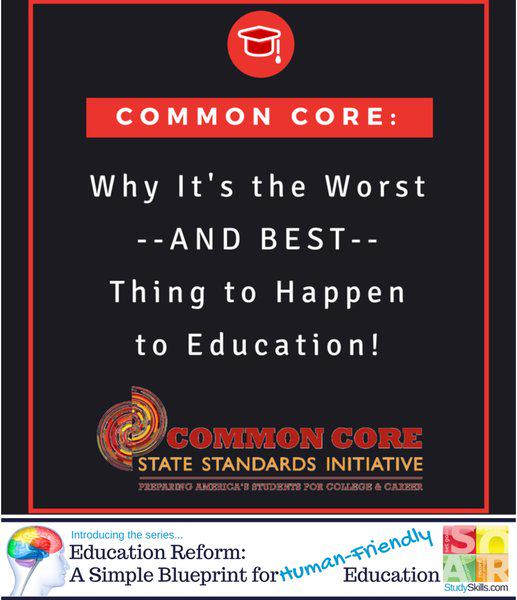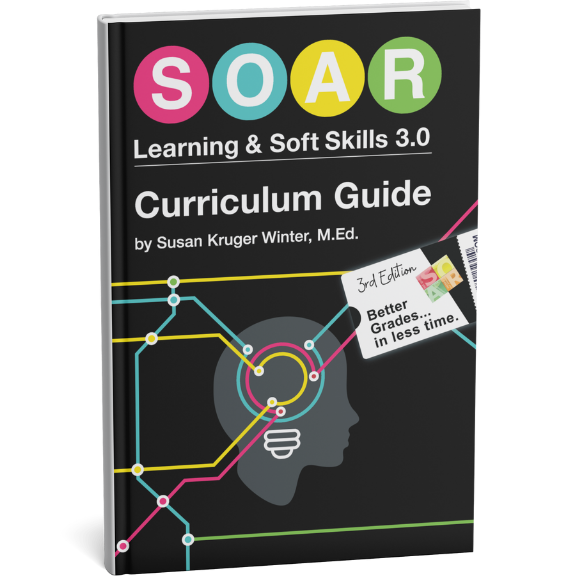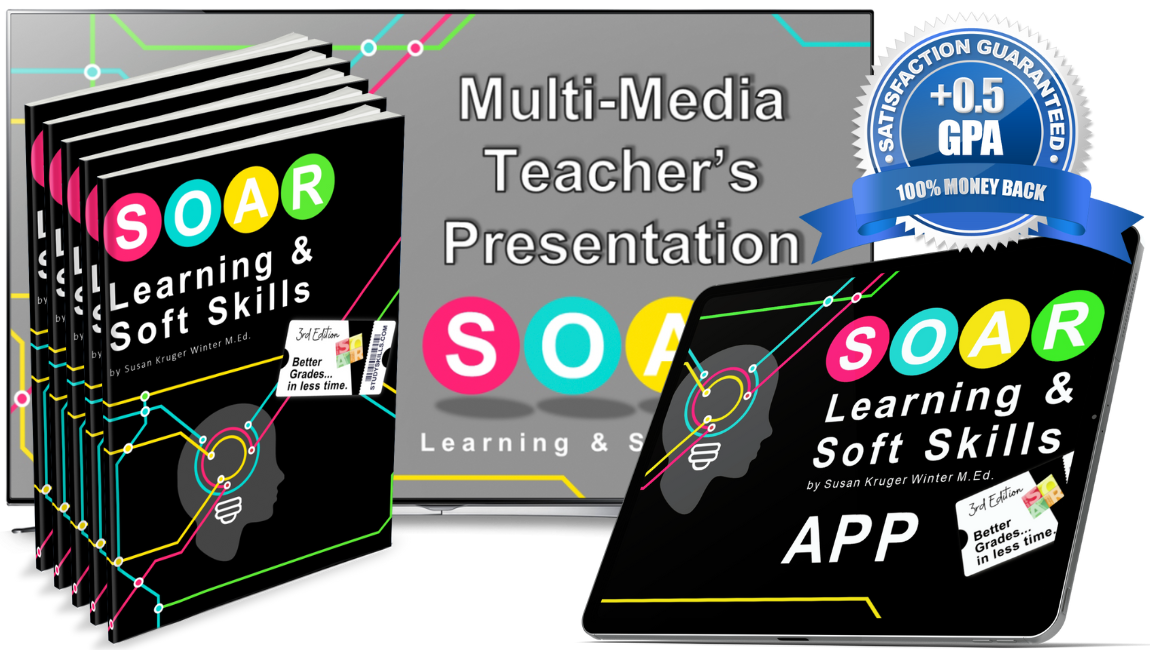Common Core: Why It’s the Worst and BEST Thing to Happen to Education!
This article is from our series, Education Reform: A Simple Blueprint for Human-Friendly Education. For a directory of all articles in this series, click here. To get the full series in one downloadable PDF, sign-up for the free report in the black box on the right.

Very few things stir more controversy than the mention of Common Core. There are numerous complains, but most seem to center on a few common themes:
- “Common Core doesn’t make sense.”
- “The math is killing our kids.”
- “Common Core doesn’t teach American History, Civics, or Government; our children will not have an understanding or appreciation for what it took to establish our country or the fundamental principles for maintaining it.”
- “Teachers hate it!”
- “There’s far too much testing.”
- “Common Core is a violation of ‘states’ rights.”
For a while, I bought into many of these arguments. Or, to be more correct, I assumed these arguments were based on truth. My experience with all educational movements over the years has been, “Same stuff, different name.” So, when Common Core came along, I ignored it for a long while.
When I finally read the Common Core standards directly, at www.corestandards.org, I was stunned! The standards –and information behind the creation of them– were far different from what I expected.
Common Core Is USA’s First Step to Follow Finland
In the previous article, I highlighted Finland as a political model to follow.
One thing Common Core has accomplished is narrowing the scope of required content. The United States has long been criticized for going “a mile wide and an inch deep.” In other words, we were throwing a lot of random stuff at students, but did not allow the time or capacity to dig deep into exploration or critical thinking skills; there was FAR TOO MUCH to cover! Common Core has narrowed that scope.
Another critical thing Common Core accomplished is bringing relevance to the real-world needs of K-12 graduates. Before one standard was written for Common Core, comprehensive research was done to consider the skills students needed to be successful in college and career.1
Those skills were carefully prioritized. With input from college faculty and employers, a list was first developed of “ultimate outcomes for graduating 12th graders.”
These ultimate outcomes are now known as the “Common Core Anchor Standards.” All standards, from K-12, are tied into these anchor standards.
In other words, all Common Core standards were derived from the ultimate question; “What do students need to be successful in college and the workplace?” It may seem obvious, but that key question had never been a focus of previous initiatives.
Common Core Is a Step in the Right Direction. But It’s NOT Perfect.
Nothing can be perfect for 100% of the people in 100% of situations. However, the Common Core is a very important and useful framework that:
- Places emphasis on higher-order skills, versus rote memorization.
- Establishes a critical link between K-12 education and “the real world.”
- Brings consistency to the expectations and outcomes our young people need to meet in order to be competitive in a global economy.
Am I saying that Common Core is clean of dirty politics? No, because I do not personally know who was involved in developing the Common Core standards or how the process evolved. All I know is that the Common Core standards are aligned with data from employers regarding skills needed in the workplace.2,3
Am I saying that Common Core is the one salvation for education? Far from it! The whole education system needs to become compatible with human development and emotional intelligence. If Common Core is implemented in a vacuum, without the context of “complete human education,” we accomplish nothing.
Am I saying that all complaints about Common Core are WRONG? Absolutely not. Most arguments have merit, but the concerns seems to come from how Common Core is being implemented or a total misunderstanding of how Common Core is intended to work.
It took a little while for me to figure out the discrepancy between the “common-sense” of the Common Core and all of the controversy. But, I’ve since talked to several dozen (maybe hundreds?) of parents, teachers, and administrators from across the country. I’ve dug into every “anti-Common Core” video posted on social media. I read as many articles as I can find.
And I have come to some conclusions about the origins of the arguments against Common Core…
Argument: “Common Core Doesn’t Make Sense!”
The major source of controversy appears to be about how Common Core is implemented! To do Common Core justice, several things need to happen:
- We must shift our mindset from previous experiences in school.
- We must provide proper training for teachers.
- We must design and execute a thoughtful implementation plan.
Instead, most states have been mandating all new curriculum, all at once. This process is extraordinarily overwhelming to teachers. And, consequently, it is frustrating students.
A better approach would have been to implement Common Core in smaller phases. For example, start with language arts for K-2. Then grades 3-5, etc. Then, introduce the new math curriculum two years later. Make a strategic plan to cover any gaps for the incoming 2nd graders who did not have this instruction for K & grade 1, etc.
A better approach would have included training and support for teachers. Teachers particularly need time to digest the curriculum and prepare meaningful lessons. More importantly, teachers need to understand the bigger picture behind Common Core.
As an educator-turned-employer that struggles to find competent help, I understand the bigger picture behind Common Core. However, I bet less than 5% of teachers were provided with thoughtful training behind Common Core. Instead, everything has been “shoved” at them, out of context, and with no support.
As a result, there is nothing but chaos, overwhelm, and frustration! No wonder Common Core doesn’t make sense!
Argument: “The Math Is Killing Our Kids!”
Frankly, most frustration against Common Core is related to math. In fact, it’s a repeat of the “Chicago Math” controversy of the ‘90s. Both issues originated from the same source, the publication of the National Council of Teachers of Mathematics (NCTM) Principles and Standards for School Mathematics. This document was first published in 1989 and revised in 2000. These “new” standards place emphasis on conceptual understanding and problem-solving over procedural knowledge and rule-driven computation.4
“Conceptual understanding and problem-solving” better represent the skills needed in the 21st Century workplace. Generally, this approach is also a better match to human development and the natural ways we learn. However, it is a dramatic shift from the style of “procedural knowledge and rule-driven computation” that most of today’s adults received.
Here, again, implementation is key. You can’t throw a whole new approach for teaching/learning math to 5th graders and expect them to be successful without a carefully considered transition plan.
Instead, teachers were simply given new math texts, with “new” approaches for math, and expected to run with it. This is a terrible thing to do to a conscientious teacher! I know, because I’ve been there.
Quick personal story to illustrate how critical proper training is for teachers…
I was first introduced to Chicago Math as a 5th-grade teacher. I was new to the school district. Wasn’t hired until late October. (Long, bureaucratic, story.)
I had ZERO training for Chicago Math. The principal simply gave me the teacher’s edition and wished me luck. To say I hated the curriculum would be a gross understatement!
In fact, every single argument I have heard about Common Core Math is something I *experienced* while trying to teach Chicago Math that year. My stomach still flares into knots when I reflect on how miserable I was trying to make sense of that curriculum!
The following year, I took a job in a new school district. They also used Chicago Math.
This time, they provided a day of training before the start of school. That one day changed everything! I finally understood the reason behind the design of the curriculum.
To my surprise, I discovered the curriculum was actually quite elegant! Chicago Math immediately went from being my greatest nemesis to being my favorite curriculum. All I needed was an understanding of the “big picture” and a walk-through of the curriculum materials.
Like Common Core Math, the experience required a totally different mind-set. Common Core and Chicago Math are much more focused on developing though-processing. “Traditional math” is much more focused on computation. I didn’t understand that shift; at the time, I didn’t even have a “grid” for it! Likewise, if teachers and parents don’t understand this shift –and the reason for it— the curriculum is doomed from the start!
Like Common Core Math, the style of math I was teaching required a long-term implementation plan. Everyone knows that Math builds upon itself. So, beginning a radically different approach to teaching and learning math in upper grades is a real source of frustration for everyone: students, parents, and teachers. It’s especially frustrating when they don’t understand that a specific shift has taken place.
In summary, Common Core Math is a transition from focusing on “computation skills” to building “thinking and problem-solving skills.” This is a dramatic shift that impacts everything about math instruction! It requires proper training for teachers and parents. It also requires a careful transition plan for students. Without these elements, there will be mass chaos and frustration!
Argument: “Common Core Doesn’t Teach American History, Civics, or Government!”
This is true. Common Core is focused specifically on “college-readiness” and “employability skills,” because the United States is deep in a national “skills gap” crisis. Even our best students are at the bottom of the industrialized world.5
However, the creators of Common Core were not advocating that these subjects be omitted. The intention was for states or local government agencies to fill in these requirements. The following comes directly from the Common Core website:
Q: Why are the Common Core State Standards only for English language arts and math?
A: English language arts and math were the subjects chosen for the Common Core State Standards because they are areas upon which students build skill sets that are used in other subjects. Students must learn to read, write, speak, listen, and use language effectively in a variety of content areas, so the standards specify the literacy skills and understandings required for college and career readiness in multiple disciplines. It is important to note that the literacy standards in history/social studies, science, and technical subjects for grades 6–12 are meant to supplement content standards in those areas, not replace them. States determine how to incorporate these standards into their standards for those subjects or adopt them as content area literacy standards.6
Ultimately, the Common Core is a compromise between “national” and “state/local” oversight. As noted above, adoption of Common Core is not an endorsement to strip all other content from the curriculum. It’s merely a standard of expectations in the two most critical subject-areas for college and career functionality.
Argument: “Teachers Hate It!”
I’ve already described many ways in which teachers have not been given adequate support to effectively implement Common Core standards. On the whole, teachers have not been given:
- proper training about the big picture behind Common Core,
- enough time or support to effectively develop implementation plans, or
- the opportunity to implement Common Core in phases to reduce overwhelm.
But, there is one more problem that is far more destructive and poisonous to teachers…it’s the lack of trust and respect granted to teachers from government and school-district administration.
For some reason, Common Core implementation has become attached to rigorous micro-managing in the classroom!
That micro-managing is in direct contradiction to the intentions of Common Core, as noted directly on the Common Core website:
Myth: The standards tell teachers what to teach.
Fact: Teachers know best about what works in the classroom. That is why these standards establish what students need to learn but do not dictate how teachers should teach. Instead, schools and teachers will decide how best to help students reach the standards.7
Teachers are professionals; they are required to have more education than any other profession except medical doctors. (Yes, even more than lawyers.) When a person chooses to become a teacher, they choose a profession with limited options, controlled pay scale, and a LOT of expensive and required training, paid at their own expense.
Despite these known limitations, teachers choose the vocation because they want to make a difference. But, with every day that passes, teachers’ hands are tied tighter and tighter behind their backs. Their compassionate and creative energies are shut down. Teachers are not trusted.
For example, I know of one school agency that prepared hundreds of “Common Core Lesson Plans” to distribute to the local schools districts they service. Administrators of the local districts handed those “lesson-plans-in-a-bag” to their teachers with the mandate to teach EXACTLY what’s in that lesson plan. No deviating.
Teachers are now expected to follow a script! This process completely eliminates a teacher’s ability to connect with their students in a meaningful way. They can’t have fun with the curriculum; they can’t make it engaging for their students. They don’t have the time (or authority) to modify lessons if students are not understanding.
This process is NOT teaching. It’s commanding! It negates the very reason teachers selected this vocation. And, it has NO place in an effective learning model for human beings.
This restriction on teachers is not just happening in one, isolated incident. It’s a nationwide epidemic!
Argument: “There Is Far Too Much Testing!”
From everything I’ve seen, there is far, far too much emphasis on testing! But, these mandates did NOT come from Common Core.
According to CoreStandards.org:
Are there data collection requirements associated with the Common Core State Standards?
Argument: “But, Common Core Is a Violation of ‘State Rights!’”
Certainly, this argument is ideological in nature. I understand and sympathize with both sides. I want as little outside interference in my life –and my children’s lives– as possible.
Yet, I have visited schools across the country. I have examined all of the data. We clearly have a national crisis on our hands!
Consider the following…
We have always had a “national curriculum.” It was disguised as 50 individual “state curricula” but it was all the same! I used to do “State Standard Alignments” for the world’s largest text-book company; I became intimately familiar with individual state standards. Every state simply copied the national standards, but made minor tweaks in wording and added a few unique outliers to claim it as their own. (Some may refer to this as “CYA Leadership.”)
With this in mind, our current education crisis is a *result* of too much interference. Finland provides a model for establishing a streamlined national standard of skills, while also scaling back the interference of administration that has no direct contact with students.
(WARNING: This will anger a lot of people, particularly administrators working outside of the schools. Keep that in mind when you hear arguments against this move! In truth, there will always be a place for an effective, caring educator. But, certainly, all change and transition is intimidating. Just keep your focus on Finland…)
As previously mentioned, Common Core was developed as a compromise; it is an attempt to solve our national “skills gap” crisis in language arts and math, while allowing for local decision-making in all other areas of the curriculum. Finland has illustrated how this can be a healthy compromise, specifically if we follow their lead by investing resources –and trust—in our teachers on the front line!
History Supports Some Federal Intervention
When our country was brand new and the ink was still wet on the Constitution, Noah Webster was a young student from Yale who made a critical observation.
Sitting at ports-of-call, he noticed people getting into fist-fights! People would meet at these ports from various colonies/states with vastly different dialects and varying vocabularies. They all spoke English, but in the days before audio and visual media, they couldn’t understand each other.
The fist-fights were a result of simple misunderstandings! Webster thought, “We’ll never survive as a country if we can’t understand each other! We can’t resort to settling our differences with violence instead of words.”
Up to that point, Webster firmly believed in limiting federal power. He believed in protecting the rights of the colonies that had just become states. But, in an instant, he saw the critical need for unification across the states.*
So, he created spelling, grammar, and reading textbooks specifically to teach the first generations of Americans a common language and establish a “native tongue.” His books were wildly successful and arguably vital for the stability of our young nation. They also funded the years of his research in compiling the dictionary, where he attempted to further regulate and “cement” a common vocabulary for generations to come.**
Even today, with endless access to audio/visual media, we still have several regional words and very distinct dialects. However, just two weeks ago I was able to sit at a table with several cousins from North Carolina and understand them clearly –even through their thick “drawl”– because of Webster. He worked tirelessly for more than 50 years. He invested every last cent and died penniless to secure a common language for our young nation. To him, it was a cause of national stability and security.
Today is no different; education is the critical foundation of economic development and, ultimately, our national security. The data regarding our global position is nothing short of alarming! Just as Webster observed, this situation requires thoughtful consistency across the country.
——-
*Initially, Webster had to travel to all 13 states to file copyrights for each of his textbooks. Eventually, he fought for federal copyright protection. (Another example of recognizing some inherent efficiencies at the federal level.) He’s now known as the “Grandfather of the Copyright.”
** Webster even tried to bring standardized “spelling rules” to the English language to make the language more logical and less confusing. In some cases, he was successful. In most cases, however, he faced backlash. He found people were very sentimental about their language and refused new spellings, even if they were more logical.
Conclusion
Common Core, as it stands in its unadulterated form on www.corestandards.org could be ONE step in a better direction for our country. But, so far…
Common Core has been one of the worst things to happen to education because of a very haphazard implementation process:
- Too much was mandated at one time.
- Proper training and support was not provided to schools or teachers.
- Common Core has been associated with a heavy emphasis on standardized assessments, which is not at all endorsed by Common Core.8
- Teachers on the front-lines have been robbed of all creative license; many are required to teach from scripts, which is in direct opposition to the intention of Common Core.9
However, if we can overcome the implementation problems, Common Core can be the best thing to happen to education:
- First and foremost, the Common Core bridges a fundamental gap existing between K-12 expectations and the “real-world” needs of the workplace!
- Common Core places emphasis on higher-order skills, versus rote memorization. This is a critical shift in the expectations of the 21st Century workplace.
- Common Core brings consistency to the expectations and outcomes our young people need to meet in order to be competitive in a global economy.
- Common Core grants teachers the freedom to make decisions about how to help students meet these standards.
- Common Core provides a useful framework for meeting a national skills crisis in math and language arts, while also allowing states the freedom to determine all other subject standards.
Common Core is *not* THE ANSWER to solving our education crisis. As we move forward, we must be mindful to plan strategically and avoid the implementation pitfalls of our recent past. We must be sure to provide instruction: in a context mindful of the “whole person,” correlated to human development, and connected to real-world experiences.
But, for now, Common Core is the United States’ first step towards following the proven model established by Finland. There is more that can be done, but it starts with a discussion based on facts and clear understandings.
In the next article, I will address The Simplest Leverage Points in Reading, Math, & Skills Instruction.
To our students’ success,
Susan Kruger, M.Ed.
Sources
1 http://www.corestandards.org/about-the-standards/development-process/
2 http://www.corestandards.org/ELA-Literacy/CCRA/
3 http://relevanteducation.org/what-employees-need/
4 Wargner, Cynthia. (2002) Helping Students with Disabilities Participate in Standards-Based Mathematics Curriculum. ERICIOSEP Digest Number E628. Reston, VA: ERIC Clearninghouse on Disabilities and Gifted Education.
5http://www.ets.org/s/research/30079/index.html
6 http://www.corestandards.org/about-the-standards/frequently-asked-questions/#faq-2313
7 http://www.corestandards.org/about-the-standards/myths-vs-facts/
8 http://www.corestandards.org/about-the-standards/frequently-asked-questions/#faq-2318
9 http://www.corestandards.org/about-the-standards/frequently-asked-questions/#faq-2322
Education Reform: A Simple Blueprint for Human-Friendly Education
This article is from our full report on education reform. Portions of the report will be released on a weekly basis in article form (see the directory below).
However, to access the full report (in its entirety) now, sign-up in the black box on the right.
Education Reform Article Directory:
- Introduction to Education Reform: A Simple Blueprint for Human-Friendly Education
- Three Core Problems with Education in the United States
- The Success Pyramid: A Model of Effective & Efficient Learning
- The Brain Biology of Learning: Why the Success Pyramid Works
- Solutions for Core Problem #1 with Education in the United States
Solutions for Core Problem #2 with Education in the United States
Solutions for Core Problem #3 with Education in the United States - Special Education: It Doesn't Have to Be So Difficult - Part I of III
Special Education: How to Solve & Prevent Learning Disabilities - Part II of III
Special Education: The Brain Biology of ADHD & Autism - Part III of III - Ideal Instructional Models: Successful Examples of Complete Human Education
- Finland: A Political Model of Education Reform
- Why Common Core Is the Worst & BEST Thing to Happen to Education
- The Simplest Leverage Points in Reading, Math, & Skills Instruction
- Looking Forward: Advice from a Futurist
- Conclusion: The Four Principles of Optimal Instruction
- Summary: An Ideal School System
SPECIAL REPORT: To get the full series in one downloadable PDF, sign-up for the free report in the black box on this page.

Six Steps
Conquer the Chaos
Get Our Free Guide & Information on...

"*" indicates required fields
Get Our FREE Curriculum Guide!
The SOAR® Curriculum
The most critical learning, organizing, and communication skills needed for school. Learn more here.
Who’s Using SOAR®?
SOAR® Guarantee
Click here to learn more.





